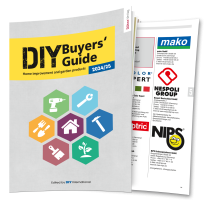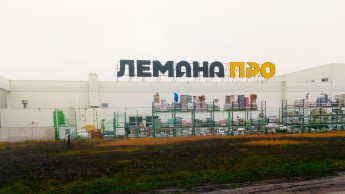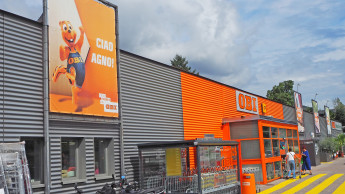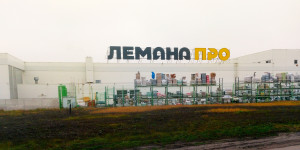Home Depot has undergone enormous changes since Bob Nardelli became CEO. He took over the leadership in 2000, after a successful career with General Electric
Its major competitor, Lowe’s, was busy remodelling its own stores, upgrading its presentations and improving its assortment and services, and turning into a fearsome rival. Over the past few years, Lowe’s has exceeded Home Depot in terms of sales and profit growth.
Home Depot operated over 2 000 stores in North America and Mexico at the end of 2005, Lowe’s had more than 1 200 in the USA alone, and Menards more than 200.
If Nardelli wanted to continue to satisfy shareholders, maintain the company's share value and grow sales and profits, changes had to be made – changes in store presentation and services, changes in the markets entered and, perhaps most importantly, in potential new customers.
One of his first moves was to add major domestic appliances to the product mix in a direct challenge to Lowe’s, where this category had always played a key role. Nardelli, who at one time managed GE’s appliance business, had also seen that Sears, the long-time market leader in this segment, was no longer as strong as it had once been. The move was a success. Today Home Depot has an appliance market share in excess of 9 per cent, while that of Sears has continued to decline.
Especially during the past two years, Nardelli has succeeded in transforming the DIY retail giant into a complex distribution mammoth serving not just consumers and occasionally contractors, but every market segment that has anything to do with building, construction and related fields. The non-DIY construction market in the USA is estimated to be worth US $ 410 bn.
In early 2006 Nardelli announced that the company was planning to cut by half the number of new store openings achieved in recent years. The new five-year plan provides for 400-500 new DIY stores by 2010, with attention increasingly focused on new service and wholesaling operations. The significance of this strategic shift has not yet been fully understood. When Home Depot started up more than 25 years ago, it identified a weakness among its competitors: higher margins. And now management can apparently see weaknesses in the servicing and wholesaling businesses that it intends to exploit likewise.
Neither type of business is present on a national scale. The majority of wholesalers and service companies are much smaller and lack the capital, buying power and structure of Home Depot. Which is where Nardelli sees the advantages for his company, which can attract major customers by offering better prices and services than existing firms.
The culmination of this strategy so far has been the acquisition of Hughes Supply of Orlando, one of the leading American distributors of building materials with 500 outlets in 40 states. The company is being integrated into the Home Depot Supply division, a move that will more than double its sales to around US $ 12 bn in 2006. Within five years it is hoped to reach a target of US $ 23-27 bn, or 18 per cent of revenue overall.
Almost at the same time came Home Depot’s announcement of the acquisition of Chem-Dry, the biggest franchising business in the carpet and upholstery cleaning sector (with 4 000 franchisees worldwide, including 2500 in the USA). This acquisition will be integrated into the At Home Services division, which offers a total of 25 services including carpet-laying, the installation of fencing and roofing, etc. At present Home Depot claims to notch up 11000 service calls every day.
Since the “Do it for me” business is growing at a double-digit rate, Home Depot intends to obtain a slice of this $ 110 bn market opportunity. It expects that 5-6 per cent of sales will come from services by 2010. The overall annual growth rates of 9-12 per cent that the company has set its sights on would be difficult to achieve from DIY retail outlets alone.
In a move parallel to this expansion into further market segments, Nardelli has also been trying to improve the Home Depot stores. Some are now featuring less clutter, more stylish presentations of fashion-oriented products and a less obviously warehouse look in some parts of the store. The company will continue to invest in store improvement and merchandising. There are plans to rework the tool displays this year, expand the home organisation and storage ranges, increase the lighting assortments, and add a new Countertop Solutions Center for advisory and planning services.
Through the introduction of self-serve checkout counters the company claims to have increased the number of staff on the sales floor and so improved customer service. It expects 70 per cent of operational hours to be dedicated to the sales floor. However, consumers continue to complain about disorder, lack of cleanliness and absence of employees.
The company is also testing new formats, including a 5 600 m² store for smaller markets and urban areas. If successful, they could lead to an expansion of the network by 300-500 additional locations by 2010, which would mean an additional US $ 4-8 bn in sales. It also has four urban stores, one in Chicago, two in Manhattan and one in Vancouver, Canada. The company is experimenting with stores of about 3 700 m² in Canada as well.
Online sales doubled in 2005. Every week more than 3 mio shoppers visit the company’s website, which has been upgraded by the addition of catalogues such as “10 Crescent Lane” and “Paces Trading Co”.
There are no sacred cows under Nardelli’s leadership. The company has closed some Expo Design Centers or converted them into Home Depot outlets. It seems there are no plans to open any more.
The most interesting new concepts are the testing of two kiosks in shopping malls in Atlanta and the planned opening of four “convenience” stores complete with petrol pumps. If this concept proves successful, 300 locations could have pumps by 2010. The kiosks promote the company’s internet site and online product categories. They are designed to make consumers aware of the broad range of products in Home Depot stores, including electronics, domestic appliances, wellness and furniture, and to promote the installation and service businesses. It might also be possible to set up the kiosks at consumer fairs, according to the company.
Proof of Nardelli’s commitment to expanding Home Depot’s activities is the allocation of more than US $ 6 bn last year to acquire more than 20 firms. Hughes Supply alone accounted for US $ 3.2 bn.
The company is extremely cautious when it comes to the international scene. It has operated very successfully in Canada and Mexico for years, but tried and failed in Chile. It is currently said to be in negotiations with China’s Orient Home Center chain about buying a 49 per cent interest in the firm.
In the most recent fiscal year Home Depot achieved sales of US $ 81.5 bn, which amounts to an increase of 11.5 per cent, or 3.8 per cent in same-store terms. At US $ 5.84 bn, profits for the year were 15.7 per cent up on the previous year. Since 2000, sales have increased by 76 per cent under Nardelli’s leadership and diversification efforts.
At the most recent annual meeting, Nardelli summed this up by saying, “We expect to become the nation’s largest diversified wholesale distributor, become number one in services, and to dramatically increase our retail presence.”
Download

 Menü
Menü













